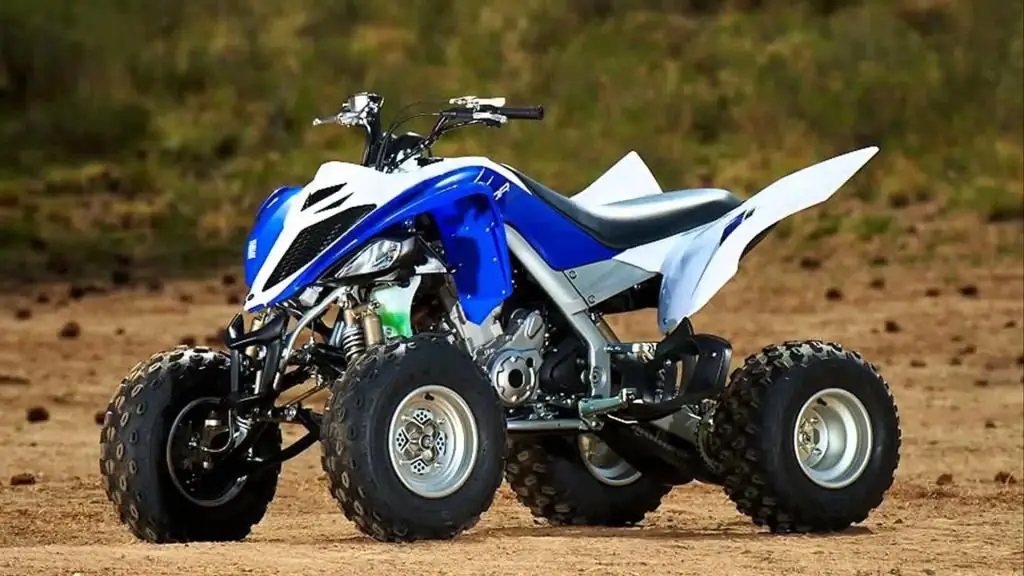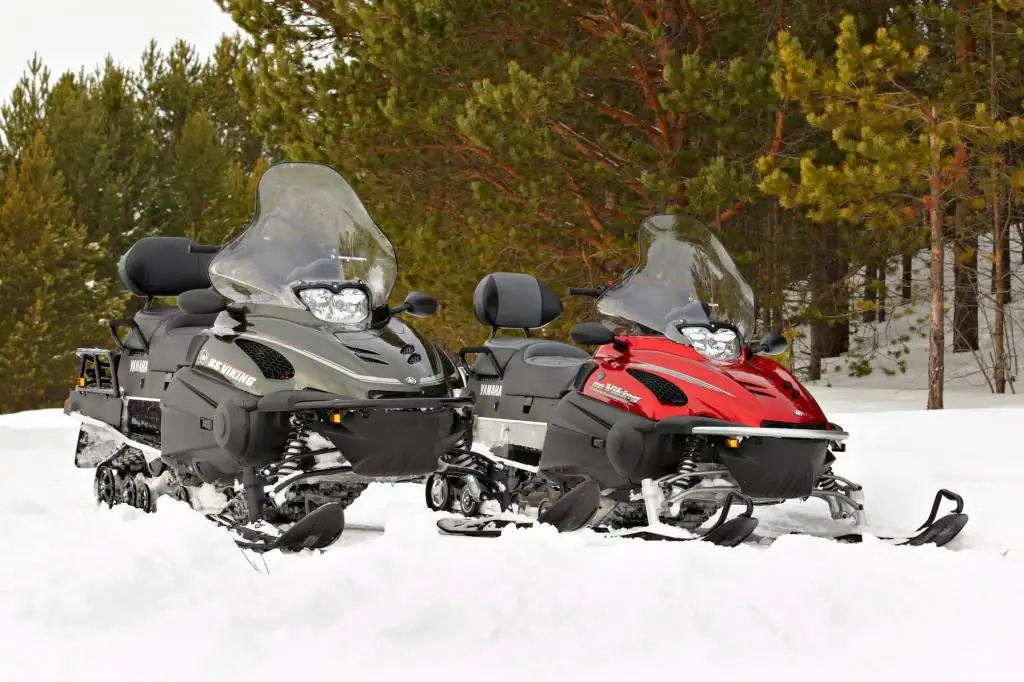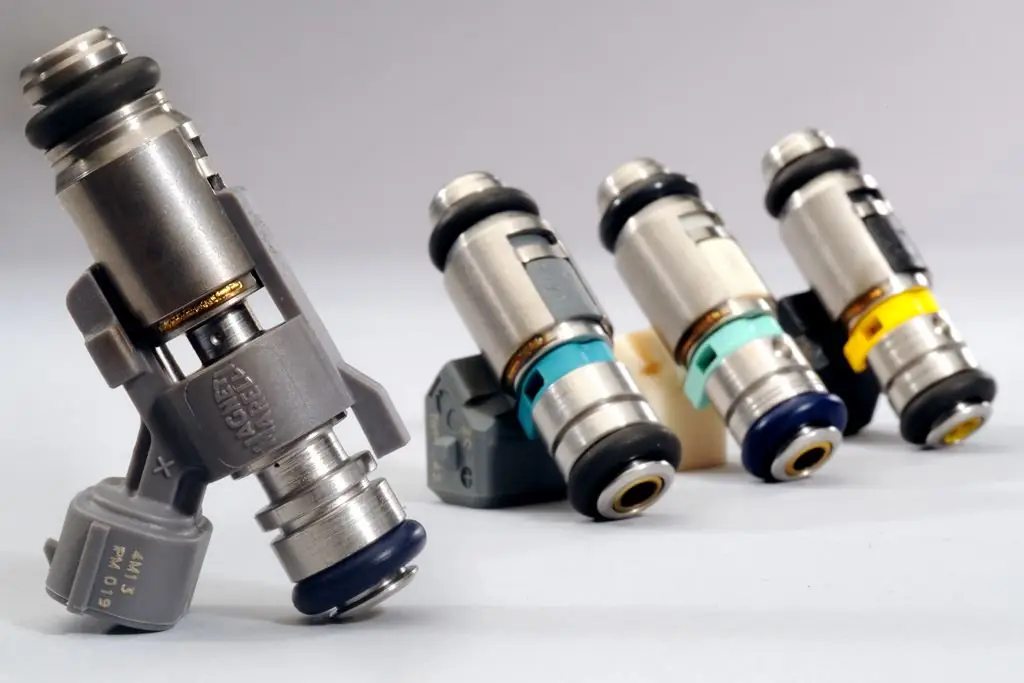2025 Author: Erin Ralphs | [email protected]. Last modified: 2025-01-22 21:14:11
The executive "Mercedes" E-class is widely known and recognizable all over the world. To date, the concern has already produced a lot of cars related to it. But the E210 is a Mercedes, which can be safely called a representative of the classic German car industry. This is what we should talk about.

Model in brief
The representative of the E-class in the back of the W210 was released in 1995. He replaced the legendary model W124. "Bespectacled", as it is also called, was produced for seven years - until 2002. There was both a sedan and a station wagon (S210). This model has become unique - at least because it was the first time it was decided to use double oval-shaped headlights. And this decision determined the appearance of the entire model range.
By the way, since the W210 has become very popular and, accordingly, bought, it was decided to continue to follow the given image. After the end of its release, the W211 was released. This is the third generation of the E-class. It was produced from 2002 to 2009. Mercedes W211 also had twin oval headlights, only more elegant and elongated, and a bodybegan to look more beautiful, more modern.
But it's worth going back to the second generation. E210 ("Mercedes") in 1999, outwardly changed. The hood, grille, bumpers and taillights have been redesigned. And from the inside, the car has changed - a multifunctional display of the on-board computer was installed under the speedometer, and control buttons for the audio system, telephone and navigation were placed on the steering wheel. And also began to be offered 5AKPP. However, you can talk about the technical characteristics in more detail.

Design
Separately, I would like to dwell on the appearance of the Mercedes-E210 car, the photo of which is provided above. Something new from the mid-nineties was adopted from its predecessor - this is the only wiper with which the entire windshield is cleaned (due to the maximum coverage area).
Door handles are also interesting. In those days, many manufacturers made them under the lower grip. But the Stuttgart concern decided to go ahead. And he began to introduce them under a natural grip. That is, the handle could be taken both from below and from above. Small but comfortable.
After the notorious modernization in the late 1999s, the turn signal was on the body of the side mirrors, although it used to be on the wing. And the front bumper has been given a more complex shape to give the model better aerodynamic performance.
Interior
The first thing that is immediately noticed when looking at the interior of the car "E210-Mercedes" is an aluminum lining with the name of the concern.
Initially to baseequipment included airbags in the amount of four pieces, as well as air conditioning. Subsequently, 2-zone climate control appeared. Safety is at the level, according to the results of the EuroNCAP test, the model received four stars.
The steering wheel can be adjusted in two directions, and it is also equipped with an electric drive. Under the steering wheel, a lever was conveniently placed that can be used to control the “cruise”. There are also buttons, due to which the driver's seat is adjusted. They are made in the form of the seat itself. Therefore, despite the abundance of buttons in the cabin, it will not work to get confused in them - everything is logical and convenient, in terms of ergonomics, the developers have tried.

What else is in the cabin?
It is also worth noting that the car E210 ("Mercedes") has seat cushion adjustment. Moreover, both in height and in angle of inclination. There is also heated seats (a standard feature for Mercedes), rear and windshield. The rear headrests can be folded down if desired, for this there is a button located on the center console, next to the emergency gang. The seats, by the way, are equipped with memory - they remember three positions.
Also, even taking the driver's seat, you can raise the sunshade on the rear window (or lower it). Next to the gear lever is the button to disable the ESP system. But this function in the car appeared after the modernization of 1999. If the model is controlled using the "machine", then next to the lever you can see the "W" and "S" keys, designed to select the mode (winter and standard).
Ait is also worth noting that in the E210 car ("Mercedes") there are even recesses for the knees in the rear seats. Thanks to this nuance, there is even more free space in the cabin. By the way, the sedan's trunk holds 520 liters. And a spare tire is stored under the floor.

Issue from 1995 to 1999
Now you can talk in more detail about what technically is a Mercedes-E210. The characteristics of the model are not bad. The layout is classic - the power unit is in front, rear-wheel drive. Initially, 8 different engines were offered. Of these, 5 are gasoline. The rest are diesel. One was even equipped with a turbine.
Most engines were based on time-tested power units. And to be more precise, the models W124 and W202.
Universal
A year after the start of production, the Mercedes-E210 station wagon was released. This model had more overhang than the sedan. And the length, respectively, also exceeded the initial indicators. The sedan was 4,818 mm long, and the station wagon was 4,850 mm long. Cargo space increased to 600 liters. And if you fold the rear seats, then you can completely bring it to 1975 l.
Interestingly, it was the station wagon that formed the basis of the extended version of the VF 210. This model was not particularly popular, as it was used as an ambulance and a hearse. The chassis of this car was increased by 737 mm. This version was equipped with a turbodiesel engine E290. But this is originally. Then they added engines E220 CDI, E280and E250 (but this is for the Italian market).

Engines
Each Mercedes-Benz-E210 car was distinguished by powerful performance. The engines were listed above, but I would like to dwell on them in more detail.
Initially, in 1995, customers were offered models with motors of the M111 series. They were good and reliable engines. The only negative is that they were a bit noisy. The E200 model in the back of the W210 was equipped with a 2-liter 136-horsepower engine. An engine was installed on the E230, which produced 150 “horses”. Then in-line "sixes" became available - 2.8- and 3.2-liter, with a capacity of 193 and 220 "horses", respectively.
Each "Mercedes-E210" reviews are extremely positive. The only thing that the owners note is that the M104 engines sin by “leaking” oil from the cylinder head gasket. But everything else is great. Owners pay special attention to the timing chain drive. By the way, all models in the back of the W210 are equipped with it. And it is this chain drive that provides a guarantee against rupture. Which is good news, because with the belt "incidents" of this kind happen quite often.
By the way, the owners are also happy to talk about the presence of the Brake Assist system. This "smart" function detects the intention of the motorist to perform hard braking. And when the driver does not have the strength to press the pedal properly, the car itself increases the braking efficiency by increasing the pressure in the brake circuits.
Economy option
Diesel vehicles are widely known for their modest appetite forfuel. It cannot be said that the W210 models consume very little, especially in our time, when 15-20 years have passed since the release. But still, the figures are quite modest, as the owners of these cars assure.
Take, for example, the Mercedes-E210 2.2 (diesel). A machine with "mechanics", rear-wheel drive, a 2.2-liter engine that produces 95 hp. With. The real consumption is 5-7 liters of fuel per 100 kilometers along the highway. In the city - about 7-9 liters. If you believe the words of the owners, then for four hundred ways along the highway, the car consumes about 25 liters - this is even taking into account long stops with the engine and air conditioning running. For a car made in Stuttgart, the figures are really modest.

Packages
This "Mercedes" E-class in the back of the W210 was offered to potential buyers in three versions. The first one is classic. That's what it was called - Classic. A characteristic feature is a discreet, classic design, in which both the exterior and the interior were sustained. The door handles are black and the side moldings feature the Classic inscription. Depending on the power unit, 15- or 16-inch steel wheels were installed on the model.
Second option - W210 by Elegance. The salon is distinguished by a luxurious finish made of natural wood and leather. The rear part has a ventilation system. The wheels are light alloy. The main difference from the "classics" is chrome handles, aluminum sills and decorative bumper covers. And Elegance nameplates. Also in these modelsinterior is illuminated.
The third version is Avantgarde. Its distinctive feature is a sporty look, successfully emphasized by an exclusive grille, xenon headlights, 16-inch alloy wheels and wide profile tires. By the way, even on the W210 Avantgarde models, a sports suspension is installed, and the body is somewhat lowered to improve aerodynamic characteristics.

AMG
Naturally, the original Mercedes-E210 attracted considerable attention. Tuning undertook to do the famous studio AMG. Moreover, they released four versions based on this model. These are E36, E50, E55 and E60.
All of them, with the exception of the first version, featured independent front suspension (double wishbones) and rear 5-link. The main "highlight" was the hydraulic 2-circuit brake system. The steering was equipped with an amplifier, which is characterized by increased sensitivity to speed.
But the most important thing is the engines. Under the hood of the E36 W210, a 3.6-liter engine was installed, thanks to which the model accelerated to 100 km / h in only 6.7 seconds. Top speed was 250 km/h - and even then it was electronically limited.
E50 was equipped with a 5-liter 347-horsepower engine and 5 automatic transmissions. This car accelerated to “hundreds” in 6.2 seconds, and its maximum was 270 km / h. A total of 2,870 of these versions were released.
E55 was an even more powerful model. Under its hood was a 5.5-liter 354-horsepower engine with 5 automatic transmission. 100 markkm / h the speedometer needle reached in 5.3 seconds. Also, 4MATIC all-wheel drive could be installed on this car (but on an individual order).
But the most powerful model was the car E50 W210 - with a 6-liter 381-horsepower engine that accelerated the car to "weave" in 5.1 seconds. By the way, there was still the E60 model. The smallest in terms of the number of versions. But incredibly powerful. After all, it was equipped with a 6.3-liter 405-horsepower engine.
Recommended:
Honda Crosstourer VFR1200X: specifications, power, description with photos and reviews

A complete review of the Honda Crosstourer VFR1200X motorcycle model. Features and innovations in the new version. What improvements have been made. Improved control system and digital control unit integration. Changes in wheelbase and arrangement of cylinder blocks
GAS A21R22: specifications, photos and reviews

"Gazelle" is the most popular light truck in Russia. This car first appeared in the distant 1994. Of course, today the Gazelle is produced in a different guise. A few years ago, the classic Gazelle was replaced by a new generation of "Next", which means "next" in translation. The car received a different design, as well as other technical stuffing
"Yamaha Raptor 700": technical specifications, engine power, maximum speed, features of operation and care, reviews and owner reviews

Japanese company Yamaha, specializing in the development and production of motorcycles, is not limited to motorcycles and develops scooters, snowmobiles and ATVs. One of the best ATVs of the Japanese company is the all-terrain vehicle "Yamaha Raptor 700"
"Yamaha Viking Professional": technical specifications, engine power, maximum speed, operation and maintenance features, reviews and owner reviews

"Yamaha Viking Professional" - a real heavy snowmobile, designed to conquer mountain slopes and snowdrifts. From the curves of the front bumper to the roomy rear luggage compartment, the Yamaha Viking Professional literally speaks of its utility snowmobile
Carburetor and injector: difference, similarities, advantages and disadvantages of carburetor and injection engines, principle of operation and expert reviews

For more than a hundred years, the car has firmly established itself in our lives. During this time, managed to become a familiar, everyday means of transportation. Let's see what the difference is between a carburetor and an injector, what advantages and disadvantages they have

